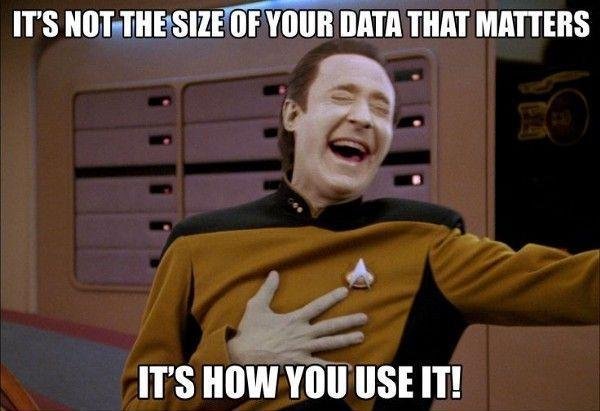Beyond the Grant – Using the Data Collected to Make Change
Your organization administers 14 surveys to clients/participants at different points in time, some are even called “XYZ Foundation survey”. Your team has a distaste for data collection because it is for compliance and results are rarely fed back to them for discussion or program improvement. Further, your clients/participants get frustrated because they answer similarly worded questions multiple times per year, and when they ask “why” staff say because their boss said they “had to”.
We’ve been there.
Many non-profit organizations report data to funders in a way that is not mutually beneficial to either the funder or the grantee. Further, many times data generated during a funding period may not be used beyond reporting to the funder. This situation can be a barrier for organizations to apply for and accept money, as many times the data and reporting requirements are not aligned with a) their mission b) their capacity c) their values, or d) all the above.
Funders grapple with truly understanding the impact of their investment at the individual, organizational, and community levels, as well as the after-effects of investments. The traditional top-down approach of funders telling organizations what to collect, when to collect it, and how to report it is frustrating for grantees, does not build trusting relationships between funder and organization, and (spoiler alert) often doesn’t give the funder what they’d hoped.
We’ve found that funders are excited by and welcome conversations from grantees about data collection and use practices. Sometimes tools/methods are negotiable if you posit a plan that works best for you and can feed two birds with one handful of seed (you and the funder).
Sounds great, now what do I do? :
Take stock and assess your tools.
Review all data collection tools used and create a crosswalk of:
Audience (who is the target for data collection)
Question topic
Perceived question purpose
If you have 5 surveys that each have a question about resilience in 6th – 8th graders, perhaps you need only ask one question and speak with funders about the wording.
Review your data collection timing, by whom, and in what format.
Consider how often you are asking things of your clients/participants, who asks them, and how it is collected. Create a second tab on your crosswalk to determine when data collection efforts happen for specific audiences, who is asking the questions, and if it’s on paper or in an electronic format.
If you survey parents in September through an online intake form with XYZ Foundation survey and again in November with ABC Foundation survey that is on paper at Parent’s Night, perhaps the ABC Foundation will allow you to use XYZ Foundation’s survey results. Explain how efficient, streamlined data collection aligns with the environment you seek to create for your clients/participants.
Create an ideal data collection framework.
Discuss with your team (include the ones who actually collect the data) the ideal data collection process now that you’ve documented what you need to collect. Consider:Holidays: Will attendance be down due to the natural cadence of things?
Conflicting activities: Perhaps administering a survey after 6 hours of state testing might not be your best bet. Most of your teen clients aren’t present in February because it’s basketball season but you need to administer a winter teen survey, so when is a better time to do that?
Capacity: Do you have enough people to cover the survey on the iPad at a program’s exit and facilitate the actual program? Or do you need to design a cloning machine? If all your paper intake forms come in August but your administrative staff already has a full plate, where could you gain capacity for one-time data entry?
Mission alignment: What does it mean if you are committed to language justice but have no system for translating tools or having interpreters on-site for interviews/focus groups? How might you navigate being required to host focus groups after 5pm during the work week and your clients work 2nd or 3rd shift jobs?
Technology: While you’re at it, now is a good time to assess technological barriers to progress and research best practices to support a functional solution.
Determine if someone on your team has hidden (data) superpowers.
Sometimes folks don’t share their capacities or ability to contribute until they are asked. You might have a database dynamo in your midst who is a graphic designer by day.
Create Community.
Meet with peer-funded organizations to discuss issues of data and evaluation to learn from each other.
Better-defined data and use leads to long-term impact.
Once you know what you have and what you need you have tools for a thoughtful, data-driven conversation with your funders.
Sounds exciting, but overwhelming? We are fun to work with and serious about our work.
Back of the Napkin Consulting is in a unique position to work with grantees to strengthen the capacity of organizations to use the data generated during funding for learning, decision-making, and sustainability. We’ve been on both sides of this relationship: the funder and the grantee. It’s not fun when only one side gets what they need.
We use a variety of methods to help organizations make meaning of their data. These approaches could be a 1-hour, online session utilizing a virtual whiteboard to an all-day strategy session using Legos®.
Together we can make data collection and reporting fun, relevant, feasible, accessible, useful, and usable.

